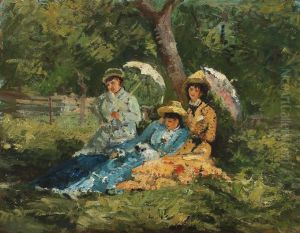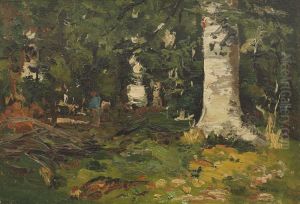Ioan Andreescu Paintings
Ioan Andreescu was a prominent Romanian painter, celebrated as one of the country's first major figures in modern art and a pioneer of plein-air painting. Born on February 15, 1850, in Bucovina, then part of the Austrian Empire and now in Romania, Andreescu showed an early interest in art. Despite the lack of formal artistic education available in his homeland at that time, his passion and innate talent for painting were evident from a young age. He initially trained as a teacher and worked in this profession for a brief period before committing fully to his artistic pursuits.
Andreescu's artistic journey truly began when he moved to Bucharest and subsequently to Munich, Germany, where he was exposed to the latest European artistic movements. His work was influenced by Impressionism and Post-Impressionism, which he encountered during his travels and studies in Western Europe, particularly France. Andreescu's paintings are known for their vibrant use of color, light, and shadow, capturing the dynamic interplay of natural landscapes and rural Romanian life with a sensitivity and depth that was ahead of his time.
In 1876, Andreescu returned to Romania and became a key figure in the Romanian art scene, contributing significantly to the advancement of modern art in the country. His works from this period include landscapes, still lifes, and portraits, characterized by their luminous color palette and innovative techniques. Unfortunately, his promising career was cut short when he died of tuberculosis on October 22, 1882, at the age of 32.
Despite his brief career, Ioan Andreescu's legacy in Romanian art is profound. He is commemorated for his role in introducing Western European artistic styles to Romania and for his contributions to the development of Romanian modern art. His works are held in high esteem and can be found in major art galleries and collections both in Romania and internationally. Andreescu's life and art continue to inspire generations of artists and art lovers, securing his place as a foundational figure in the history of Romanian art.



